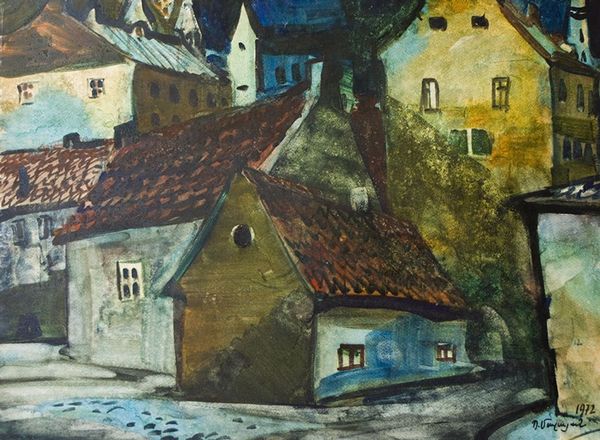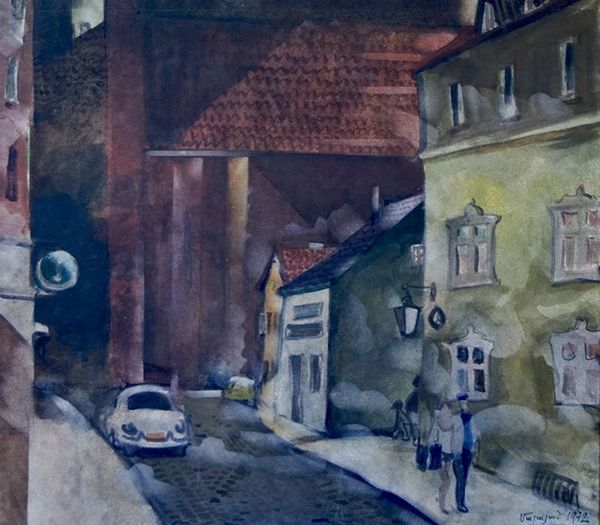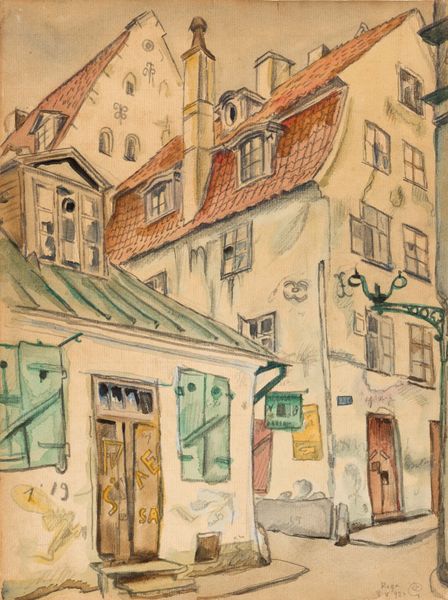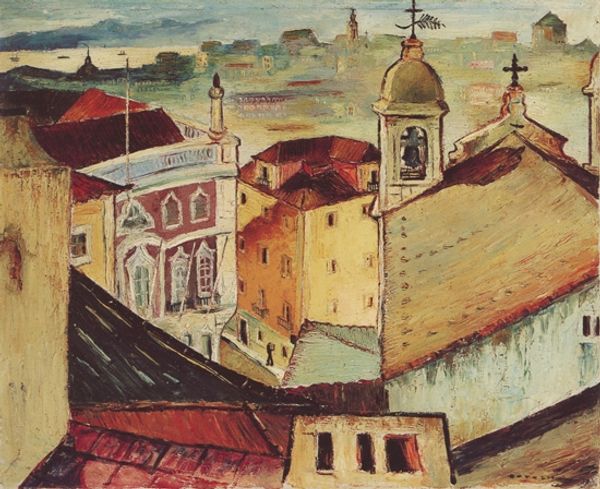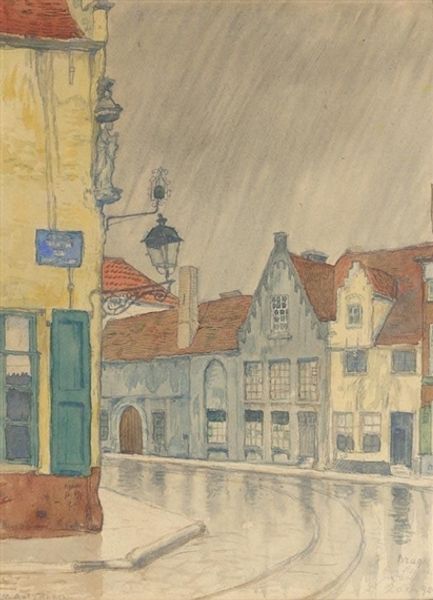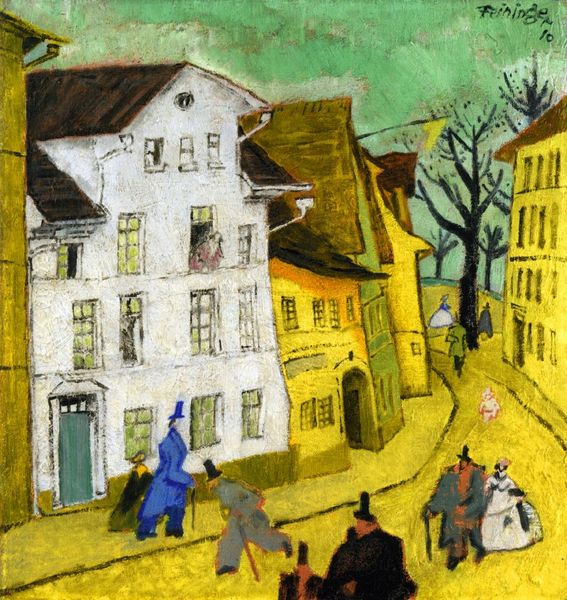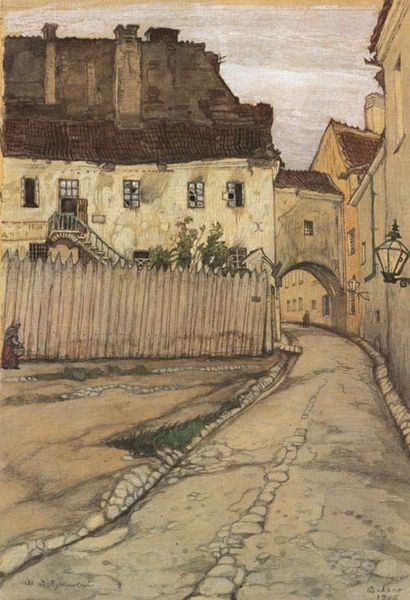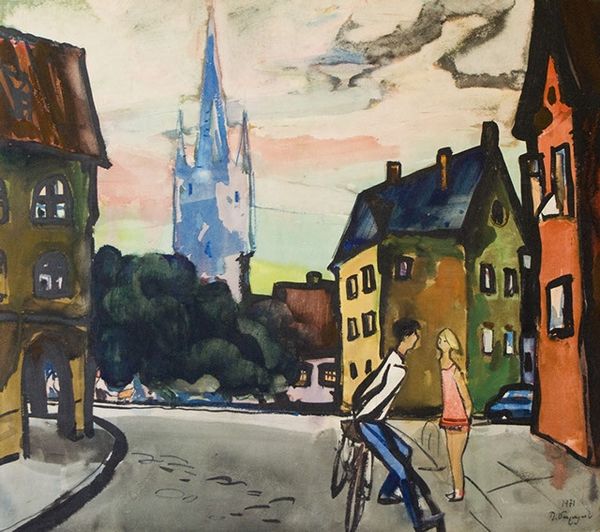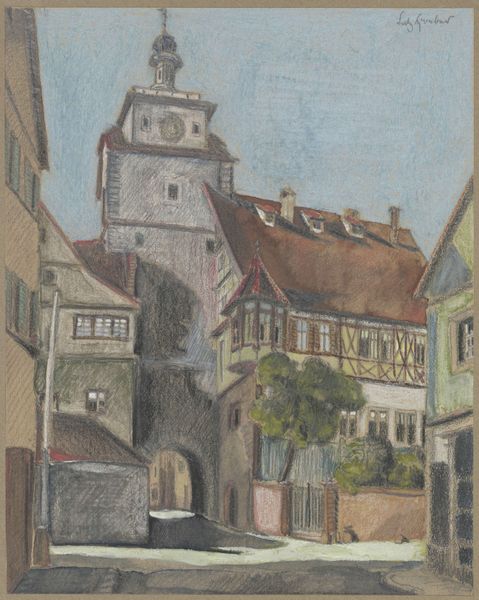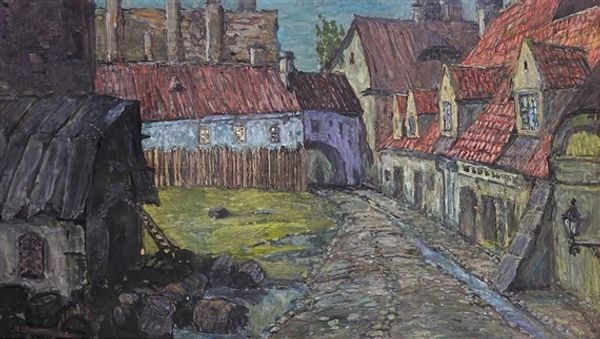
painting, watercolor
#
painting
#
oil painting
#
watercolor
#
coloured pencil
#
cityscape
#
realism
Copyright: Petros Malayan,Fair Use
Curator: This work is entitled "Olshtin, the Castle," rendered by Petros Malayan in 1972. It appears to employ watercolor and colored pencil techniques. Editor: It has a quiet, almost somber tone, doesn’t it? The muted palette really evokes a sense of old-world Europe, and perhaps even a touch of melancholy. Curator: Indeed. Given that this was created in the 1970s, during a period of considerable social and political change in many parts of the world, the choice to depict a traditional European cityscape feels quite deliberate. What meanings might the artist convey by setting the scene at that time? Editor: Well, let’s consider the buildings themselves. We have structures with heavy stone arches and tile roofs, typical examples of long-established architectural practices. The fact that people are casually moving through this space invites us to contemplate what "castle" means here: power, enclosure, heritage or maybe an oppressive memory of those forces. This wasn’t that long after the Soviet takeover of Eastern Europe… Curator: Excellent points! Thinking about materials and method—watercolor, especially, has a reputation for being somewhat 'domestic' or a medium associated with hobbyists, women, as it’s a comparatively less toxic material. The contrast between it and the grandeur of the cityscape is quite stark, almost defiant! The act of drawing or painting the urban area is then turned into one of ownership—anyone can grab colored pencils. Editor: Right, challenging traditional notions of monumental art made using stone or other building materials is very telling here. Malayan uses these simple materials, like watercolor, to highlight this theme of displacement and shifting social realities, the weight that collective memory has on the inhabitants moving through its city squares. Curator: Looking closer, the realism of the depiction raises further questions. Are we meant to see an accurate record of place or a comment on how places contain or shape our identities and relations to each other? Editor: Definitely. It's like a memory made visual. The architecture stands strong, people enter and exit—what the location has meant to others gives us food for thought about how the past influences present dynamics. Curator: Thank you. Seeing “Olshtin, the Castle” through both a formal lens and considering the circumstances of its production opens new pathways for understanding it. Editor: Absolutely. Reflecting on the urban structure itself as a locus for both personal and large-scale identity challenges what exactly a city *is* and makes it an open space to grapple with how such narratives affect our identities.
Comments
No comments
Be the first to comment and join the conversation on the ultimate creative platform.



